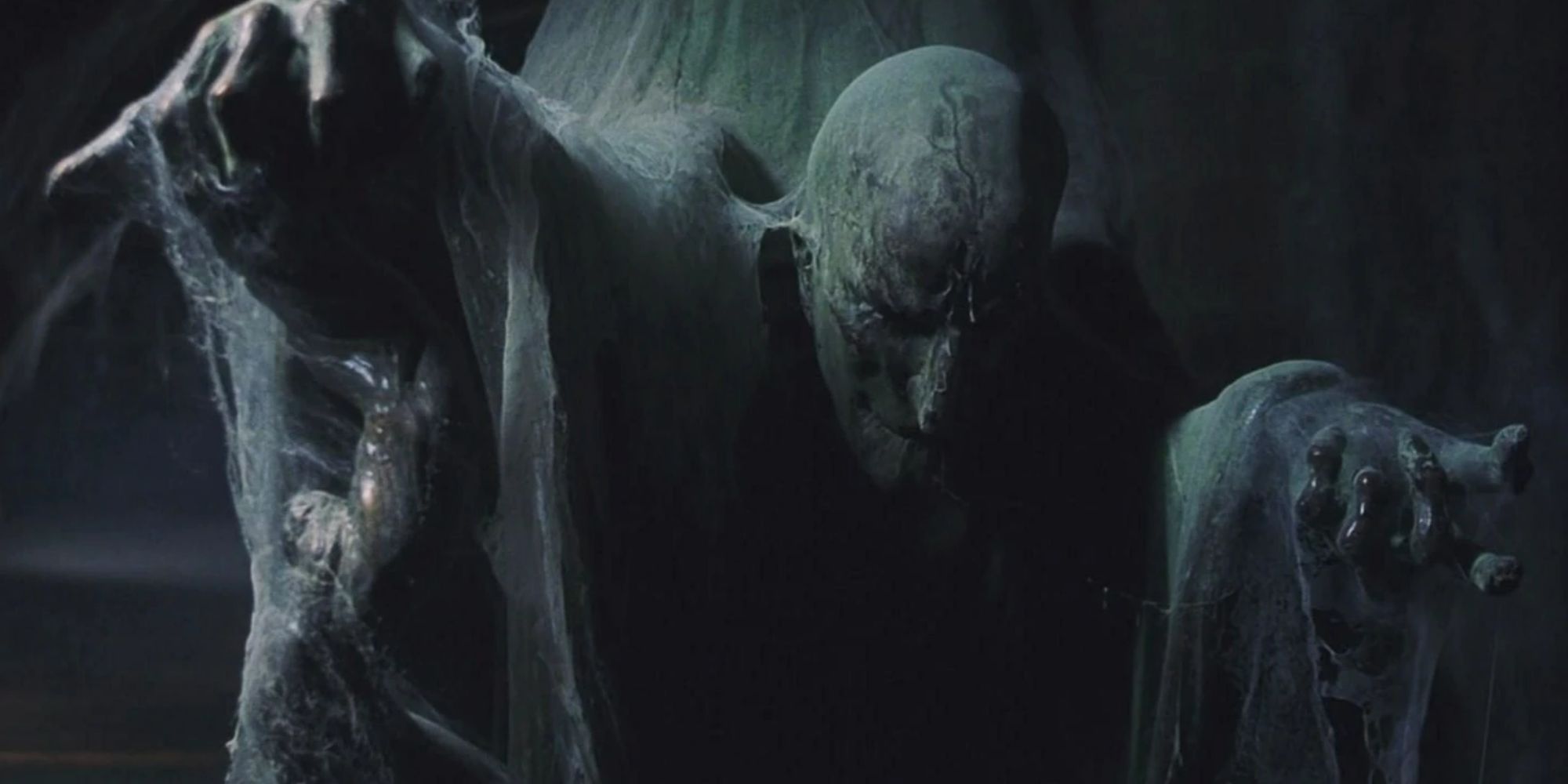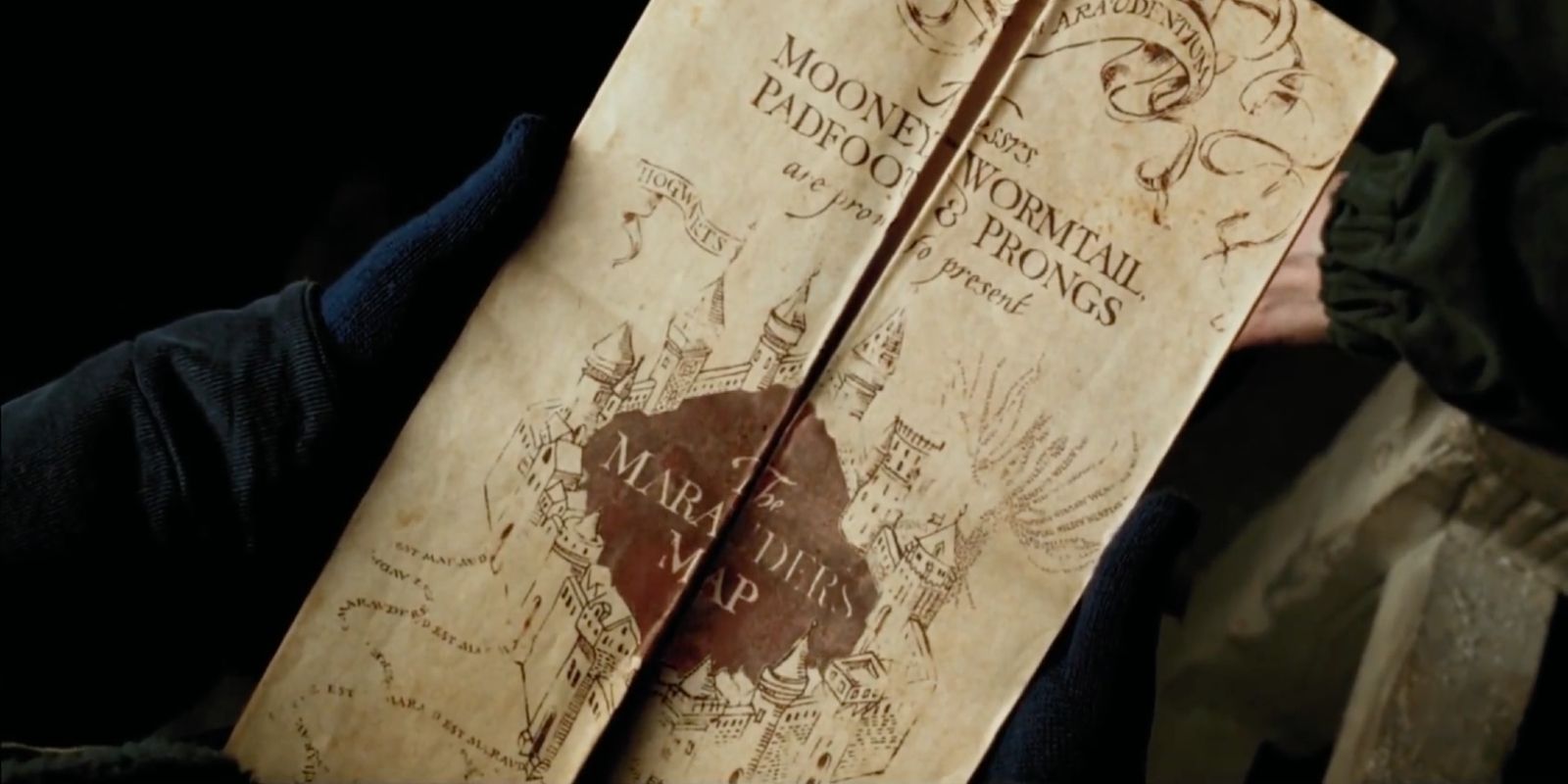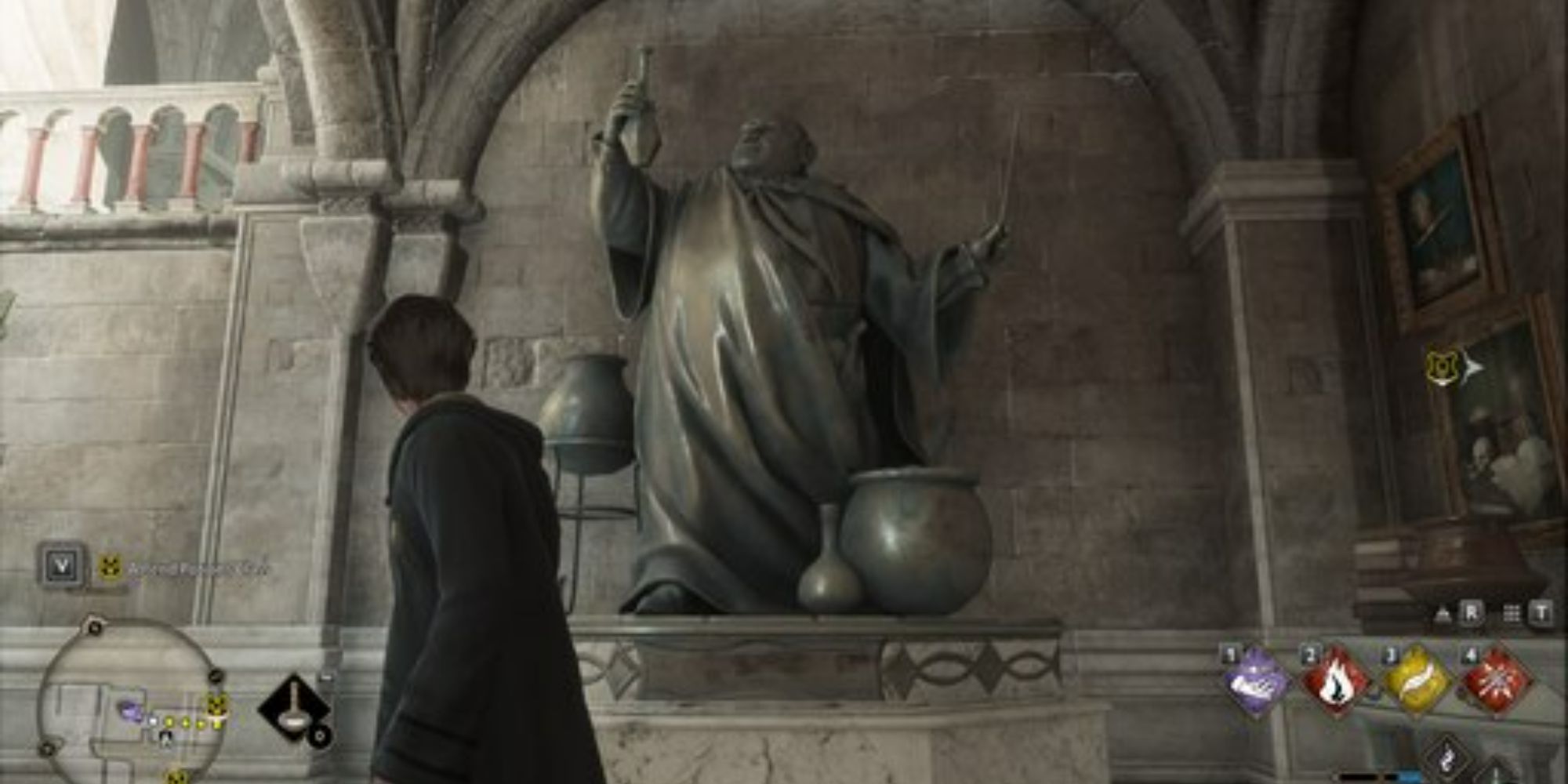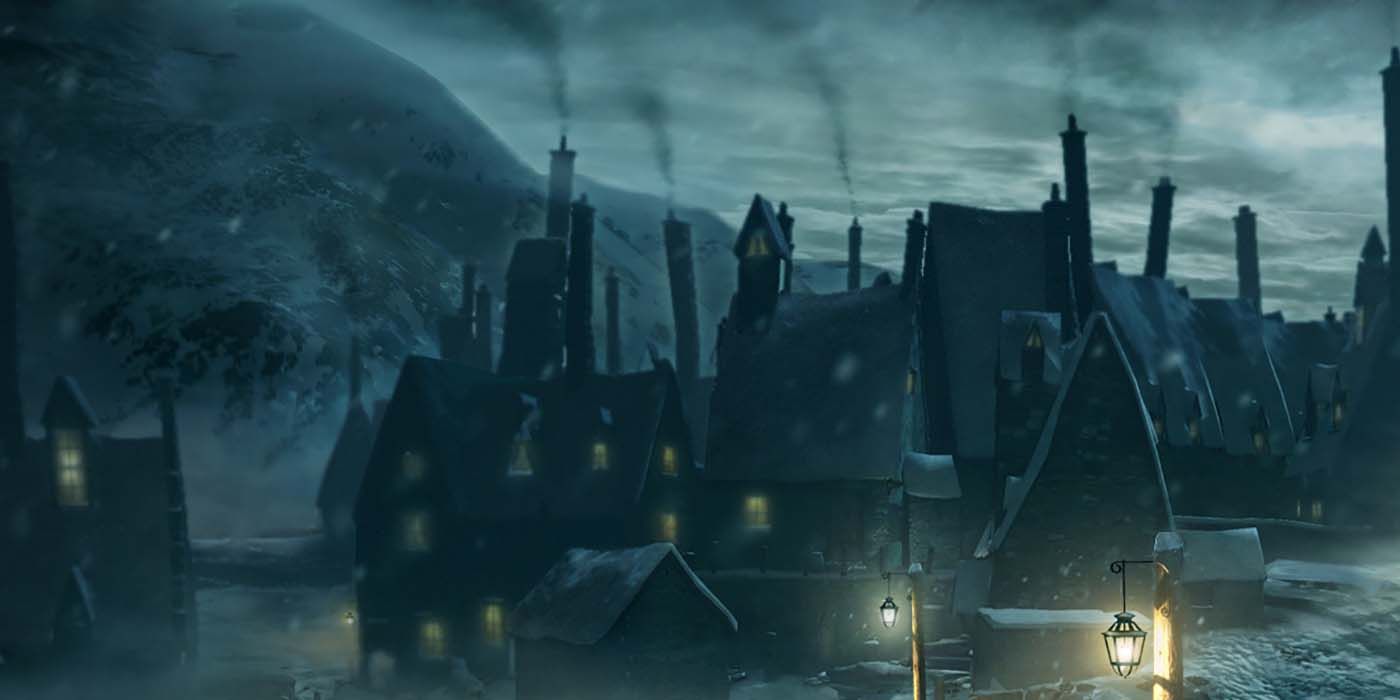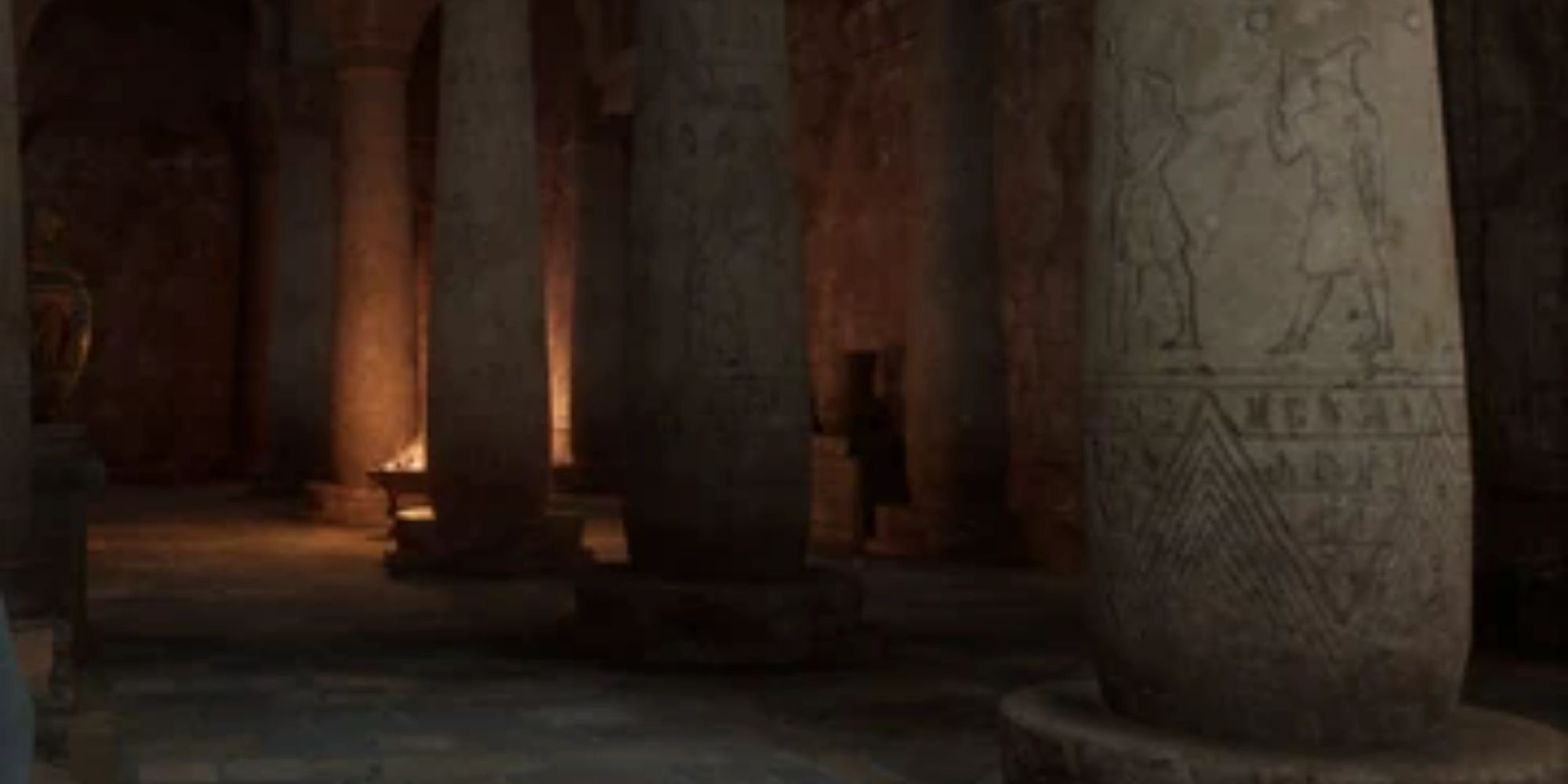Summary
- Hogwarts Castle is filled with secret passageways, hidden beneath statues and mirrors, which were used by mischievous students and dangerous individuals alike.
- The Marauder’s Map revealed seven secret passageways, including the One-Eyed Witch, Fourth-Floor Mirror, and Whomping Willow passageways.
- There are tunnels with unknown destinations, such as the one behind Gregory the Smarmy’s statue, and the Hieroglyphic Hall passageway.
Hogwarts Castle is full of secrets and mysteries in Harry Potter, including the many known passageways that Harry and clever students before him used to sneak off the grounds. These paths were hidden beneath statues and mirrors or sometimes as part of other magical Hogwarts secrets, such as the Room of Requirement. They were useful for mischievous students and dangerous when used by Death Eaters or occupied by werewolves. Of course, this was all part of the charm of the enchanted school of Harry Potter.
Harry first learned of Hogwarts’ secret passageways when he obtained the Marauder’s Map from Fred and George in Harry Potter and the Prisoner of Azkaban. James Potter and his friends had spent their school years uncovering the Castle’s many mysteries and putting them on their map so other students who were “up to no good” could use them too. The Marauder’s Map plotted seven secret passageways, though one was never described in the Harry Potter books or movies, so its location is unknown. In the years following the Marauders’ time at Hogwarts, other passageways were added, totaling up to eight known in the Harry Potter series—though only a few were included in the movies.
8 The One-Eyed Witch Passageway
Leads to Honeydukes Sweet Shop
The One-Eyed Witch secret passageway is the first that Harry used after obtaining the Marauder’s Map, so it’s the one that is the most known to Harry Potter fans. Funnily enough, the One-Eyed Witch statue was first seen in Harry Potter and the Philosopher’s Stone since it is a prominent feature of the third-floor corridor where Fluffy guarded the Philosopher’s Stone in Harry’s first year. Of course, the Boy Who Lived had no idea that this statue was guarding a passageway that led to Honeydukes in Hogsmeade village.
To access this secret passageway in Harry Potter, students (or perhaps the occasional staff member) must tap the statue’s humped back with their wand and say the incantation “Dissendium.” This causes the One-Eyed Witch’s hump to open up just wide enough to slip through. Since this passageway led straight to Honyduke’s storage room, it was likely a favorite point of access for any student lucky enough to know about it. For much of Harry Potter and the Prisoner of Azkaban, the One-Eyed Witch passageway was the only way Harry could access Hogsmeade village at all.
7 The Fourth-Floor Mirror Passageway
Leads to Hogsmeade Village
On Hogwarts Castle’s fourth floor is a mirror that conceals a secret passageway that was a particular favorite for James, Sirius, Lupin, and Pettigrew. It led somewhere in Hogsmeade village, though the precise location of its exit was never specified. Sirius suggests this passageway to Harry in the Harry Potter and the Order of the Phoenix book when the Golden Trio sought a secret location to hold meetings for Dumbledore’s Army. He explained that the corridor behind the mirror was wide enough for dozens of students to fit comfortably.
Unfortuantely, the fourth-floor mirror passageway was blocked off by a cave-in in the years between the Marauders and the Golden Trio attending Hogwarts. Therefore, it wasn’t an option for Harry to use it to either escape to Hogsmeade or hold meetings. It’s difficult to say precisely how this cave-in would have happened. Since the passageway was likely magically created, it’s probable that someone purposely caused the passage to collapse in the years before Harry Potter.
6 The Whomping Will Passageway
Leads to the Shrieking Shack
The Whomping Willow path is the only one on the Marauder’s Map that we know precisely where it came from. Dumbledore made the path, which starts at the foot of the Whomping Willow and ends within the Shrieking Shack at Hogsmeade village, so that Remus Lupin would have a place to escape to every month during the full moon. In the shack, Lupin could transform into a werewolf and make as much noise as necessary without raising suspicion since the entirety of Hogwarts and Hogsmeade thought that malignant ghosts were doing the howling.
Between the Whomping Willow’s violent nature and the reputation of the Shrieking shack, Dumbledore expected students to stay away. However, when Severus Snape was baited by Sirius Black to enter this particular passageway, it nearly resulted in his death. James reached Snape before Lupin did, thankfully, and brought him back to the Castle uninjured. Ironically, many years later, Snape would die in the Shrieking Shack anyway at the end of Harry Potter and the Deathly Hallows.
5 The Gregory The Smarmy Passageway
Leads to an unknown location
On Hogwarts’ first floor, there is a secret passageway hidden behind the statue of Gregory the Smarmy, a medieval wizard known for creating the potion Gregory’s Unctuous Unction, which makes the drinker believe that the brewer is their very best friend. Gregory the Smarmy used this potion to convince Muggle royals that he was their favorite subject. For some reason, this earned him a memorial at Hogwarts (and a Chocolate Frog card in his honor).
The passageway behind Gregory the Smarmy’s statue was still functional during the events of Harry Potter, though precisely where it leads is never specified (though it must be somewhere in Hogsmeade). Harry never seemed to need to use it, but Fred and George Weasley revealed that they had discovered it without the help of the Marauder’s Map in the first year at Hogwarts. In Harry Potter and the Prisoner of Azkaban, the twins noted that Lee Jordan wanted to show them a new passageway he had found, and they suspected that it was the one behind old Gregory.
4 The Passageway Within The West Well
Leads to a fountain in Hogsmeade Village
Another location left out of the Harry Potter movies, Hogwarts’ West Well is located on the ground floor of the Castle’s West Tower. It’s revealed in the illustrated edition of Harry Potter and the Prisoner of Azkaban (through images on the Marauder’s Map) that creeping down the well and following the passage within would lead to a fountain in Hogsmeade villain, though where the fountain is located was never described. At some point between the Marauder’s Map’s creation and Harry Potter attending Hogwarts, the well went into disuse, which caused portions of the passageway to be flooded. This led Fred and George to count it out as a viable option out of the school.
3 The Hieroglyphic Hall Passageway
Leads to an unknown location
Little is known about the passageway hidden in Hieroglyphic Hall. The books never described the chamber, and Harry never ventured there in the Harry Potter movies. However, Heiroglyphic Hall is a feature of the Harry Potter: Hogwarts Legacy video game. In this version of Hogwarts Castle, the hall is located on the first floor near the History of Magic classroom and is full of pillars covered in hieroglyphs. In the Prisoner of Azkaban movie, Hieroglyphic Hall can be seen on the Marauder’s Map, and the secret passageway leads to the Slytherin Common Room, but this contradicts the books and therefore isn’t canon.
The Weasley Twins told Harry that the Marauder’s Map has seven passageways leading “right into Hogsmeade,” so the passage in Hieroglyphic Hall can’t lead to the Slytherin common room.
2 The Passage Between The Vanishing Cabinets
Leads from one Cabinet’s location to the other
Though not a hidden hall or tunnel, the path between the Vanishing Cabinets at Hogwarts Castle and Borgin and Burkes is certainly a secret passageway and the one that can reach the furthest distance. Though they weren’t used as a method of entering and exiting the Castle until the end of Harry Potter and the Half-Blood Prince, the Vanishing Cabinets were first mentioned in the Harry Potter and the Chamber of Secrets book when Peeves smashed the one at Hogwarts, and Harry hid within its sister at Borgin and Burkes. Then, in Harry Potter and the Order of the Phoenix, Fred and George locked one of Draco’s friends in the Hogwarts Vanishing Cabinet, inspiring Draco to use them to sneak Death Eaters into the school.
It’s unclear what happened to the Vanishing Cabinets after Harry Potter and the Half-Blood Prince. As headmaster, Snape might have gotten rid of the one within the Castle since it was a security breach he wouldn’t have been comfortable with. Therefore, it’s possible that this passageway no longer exists as a method in and out of Hogwarts.
1 The Room of Requirement Passageway
Leads to the Hog’s Head Inn in Hogsmeade Village
The newest and most useful passageway in and out of Hogwarts is the one created by the Room of Requirement in Harry Potter and the Deathly Hallows. It appeared when Neville Longbottom, who always had a deep understanding of the mysterious room, began residing there after the Death Eaters decided they would no longer tolerate him at Hogwarts. Neville could only survive in the room for so long since it could not produce food and water (thanks to Gamp’s Law of Elemental Transfiguration). So, when he asked the room for access to sustenance, a passageway to Aberforth Dumbledore’s Hog’s Head Inn appeared.
The Golden Trio used the Room of Requirement passage to get into the school leading up to the Battle of Hogwarts in Deathly Hallows, and it was also how young students were evacuated from the Castle. Interestingly, the passageway’s appearance indicates that the Room of Requirement could create a path to virtually anywhere within Hogwarts or around the grounds, making it the most versatile of the Harry Potter series. Unfortunately, Harry suspected in the books that Vincent Crabbe’s Fiendfyre might have destroyed the Room of Requirement for good, so it’s possible that this passage no longer exists at Hogwarts School.














































